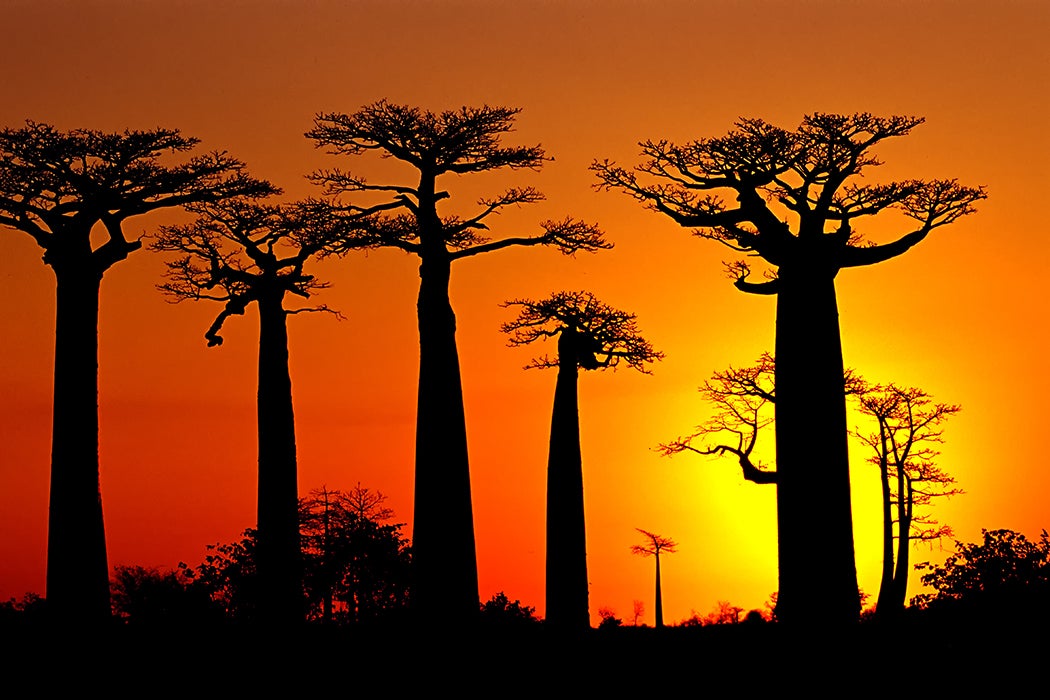Baobob trees are iconic images of Sub-Saharan Africa, towering above arid plains with their massive trunks and spreading limbs. The impressive trees caught the eye of French artist Antoine de Saint-Exupéry, famously gracing his children’s classic “Un Petit Prince.” But on the edges of their range, Africa’s baobab trees are dying, including nine of the oldest thirteen specimens. The loss of this tree would ripple across the ecosystem.
Baobab trees are widely distributed throughout sub-Saharan Africa, especially in dry, open areas, and have been introduced in other areas. According to economic botanist G.E. Wickens, writing in the Kew Bulletin, these giants are of great importance to both wildlife and people. Birds from mighty eagles to slender swifts nest in baobabs. The canopy and trunk provide homes for the venomous boomslang snake and the diminutive bushbaby, which also helps pollinate the tree. Bees, phasmids, and numerous other insects make their homes in these trees.
Baobabs also produce a nutritious fruit that is prized by elephants, antelope, monkeys, and bats. Many of these animals will also eat the leaves. Thirsty elephants will chew the pulp in lieu of moisture.
People, too, have made use of the baobab for centuries, and they are central to many myths and creation stories. There are innumerable uses for all parts of the tree. The leaves are eaten as a salad and provide food for grazing cattle. The fibres of the trees are used in textiles. The fruit is especially useful; the hard, hollow shells can be used as vessels or fishing bobbers, and the fruit itself can be used to make a type of yogurt. The fruit and other parts of the tree may have medicinal value. But the most creative uses are reserved for the massive, living trunks. Frequently hollow, these spaces have been historically utilized as cisterns for water storage. More recently, baobab trunks have been used as bus stops, and in one case as a nifty pub!
Want more stories like this one?
But the weirdest trick of all is the baobab’s accordion trunk. Over the course of a day, based on water loss and retention, the baobab’s girth can shrink by several centimeters. When a dry period is followed by a hard rain, the trunks can swell rapidly. These changes make estimating the trees’ age difficult, but Wickens estimated that mature baobabs might be 2,000 years old; modern estimates put them at up to 2,500.
No one cause can be identified for the recent die-off, but climate change is likely at least partially to blame. Many baobab species are severely threatened by habitat loss and other threats. Fortunately, the deaths most likely represent a range shift in response to a changing climate, rather than a wholesale extinction event.







